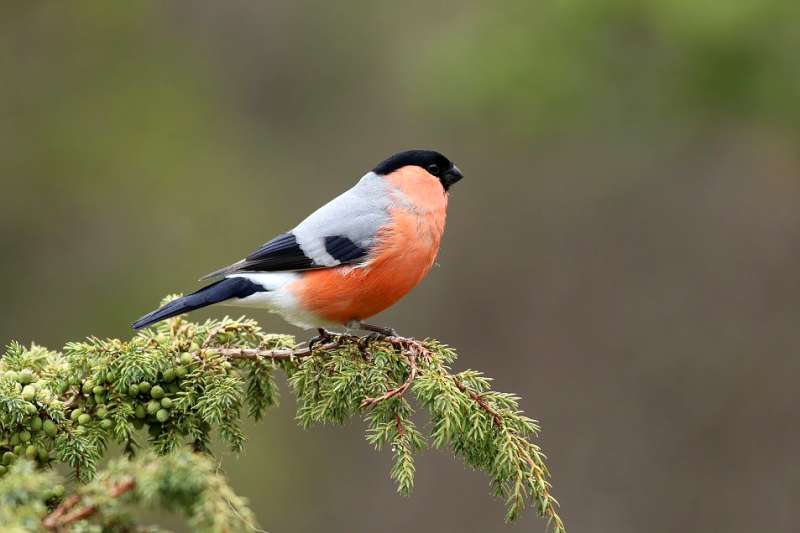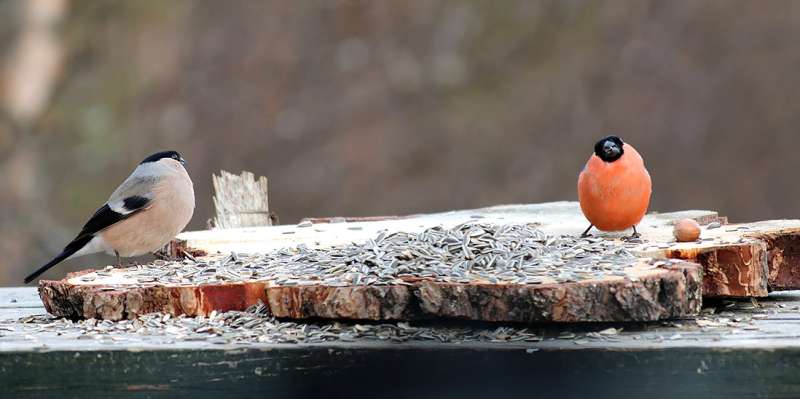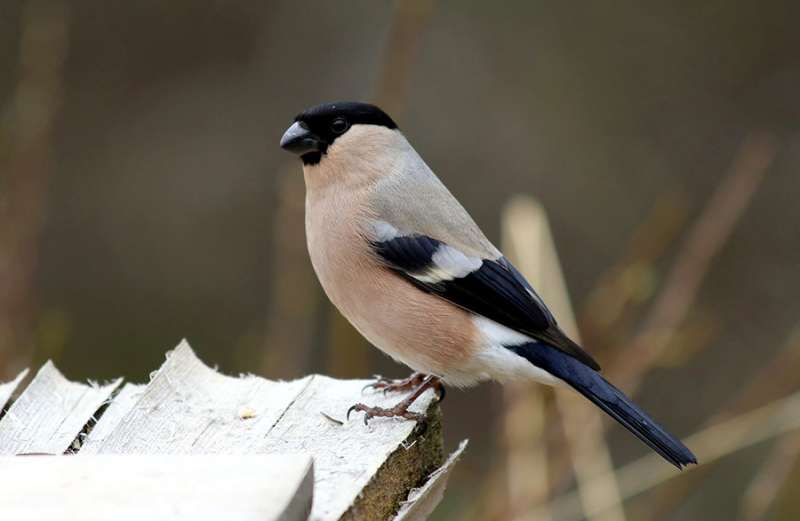Bullfinches stick together for years

Scientists and many bird enthusiasts have long assumed that bullfinches (Pyrrhula pyrrhula) mate for several years, and perhaps even for life.
But believing and knowing are two different things. A professor emeritus at the Norwegian University of Science and Technology (NTNU) has 24 seasons of field observations that now confirm this is indeed true.
"Although guides and reference works have claimed that bullfinches live as bonded pairs throughout the year and for life, this was based on assumptions," says Professor Emeritus Olav Hogstad at NTNU's Department of Natural History.
Hogstad has followed bullfinches in Budal in the Trøndelag region of Norway through 24 seasons. In Budal, bullfinches spend the winter together in small flocks of two to seven individuals. Several sources have assumed that these small flocks also include pairs that remain together through several mating seasons.
But the flocks constantly move around and are rarely in any one place for very long. Even though a flock may visit the bird feeder for several days in a row, it's unlikely that the birds are the same individuals. This may be one of the reasons that previous banding efforts haven't been able to confirm multiyear pair fidelity.

Hogstad's advantage is that he is out in the field a lot, usually at the same time over several years. His approach has yielded results.
Found more pairs
Hogstad banded a total of 165 birds, comprised of 63 adults and 102 young birds. He found more telltale signs that pairs actually stay together through several winters, and therefore probably through several mating seasons.
He found three pairs that stayed together for one winter, three that stayed together through two winters, and one pair that stayed together through three winters.
So the pair fidelity claim turns out to be true. Bullfinch pairs can mate for a long time. Hogstad's results have been published in The Royal Norwegian Society of Sciences and Letters (Det Kongelige Norske Videnskabers Selskabs Skrifter).
Shy during the breeding season

Bullfinches are easy to get a good glimpse of once they come to the feeder in the winter, but the birds can be very shy and elusive during the breeding season. When did you last see a bullfinch in the summer? Since their song is soft and quiet, they're not easy to find by sound, either.
Bonded pairs likely have an advantage during the breeding season because they can begin mating earlier in the spring and don't have to expend energy on finding a new mate. Once they've found a partner of high quality, it's a good idea to hold on to him or her.
"It's a little embarrassing to tell people that it's taken a quarter century of 'research' to confirm something that 'everyone has known' for several decades. On the other hand, it shows that if an assumption is repeated often enough, it'll eventually become a reality," Hogstad says.
More information: Hogstad, Olav. (2016) Pair fidelity of wintering Bullfinches; observations over 24 years. Det Kongelige Norske Videnskabers Selskabs Skrifter. Vol. 2016 (2).
Provided by Norwegian University of Science and Technology




















